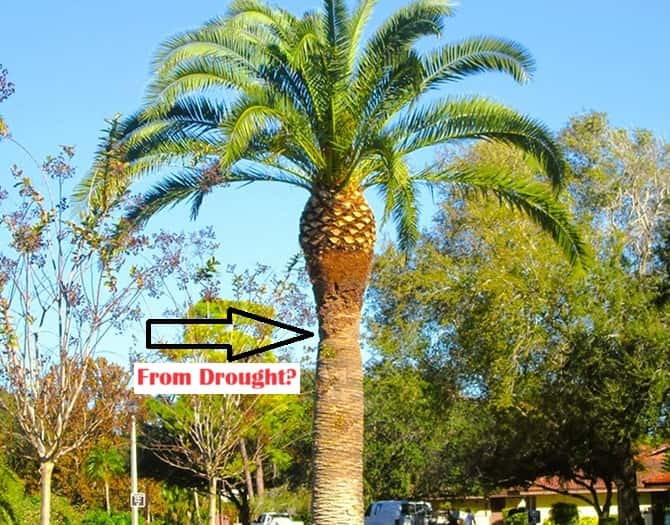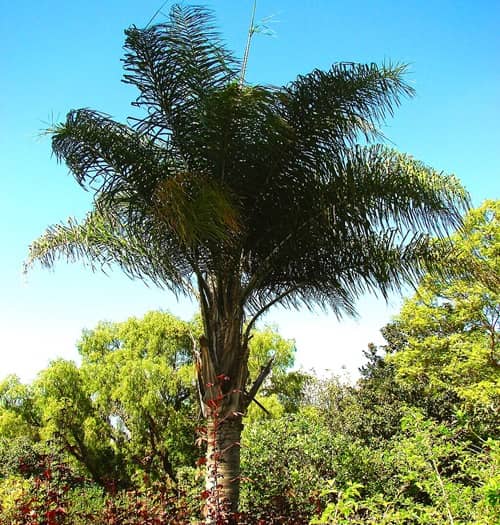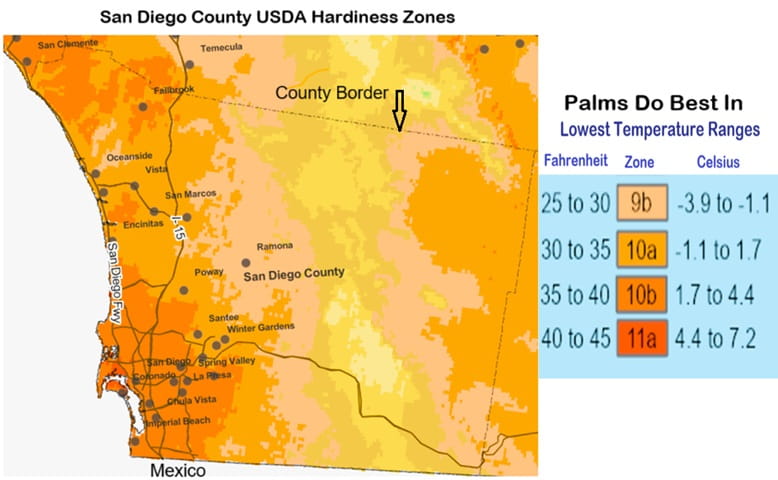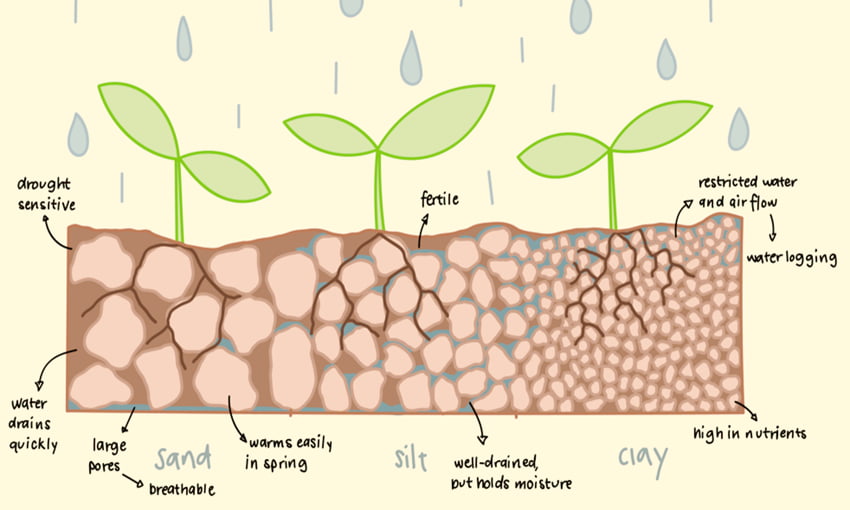- Home
- Caring For Palms
- How to Water Palms
How to Water Palm Trees
Knowing how to water palm trees properly is a good idea. Water is needed by all palms to keep them beautiful & healthy. But most can tolerate temporary dry times. Understanding how to water your palm correctly can make all the difference.
Let's get you the best practices for watering palm trees.
At Mission: Palm Trees
Palm lovers can soothe their palm-related searches and concerns. Our articles are intended to inform, while having fun, easily Finding What You Want or Need. Without unneeded shoptalk & tiring endless research. We Research For You!
First, remember it's important to get your palm tree watering schedule just right for good maintenance. Very few studies exist on how much water palms need. So it's good to use your common sense, along with knowing the Palm Species. Finding that sweet spot that will be key to a healthy palm.
Note that overwatering or underwatering can each lead to Problems for Palms.
- Too Much Water can cause wilting & yellowing.
- Water-logged soil means enough oxygen won't get to roots, fungi's environment.
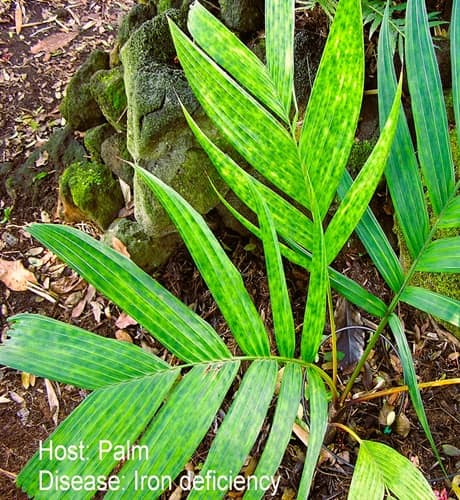 Leaf Yellowing From Washing Out Soil Iron
Leaf Yellowing From Washing Out Soil Iron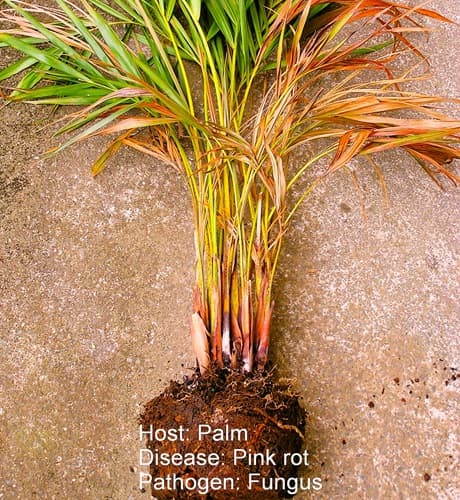 Soggy Roots Attract Fungus Attacks
Soggy Roots Attract Fungus Attacks- Too Little Water causes wilting. Eventually leaf tips blacken (necrosis). The trunk also shrinks inner cells, causing shallow indentations.
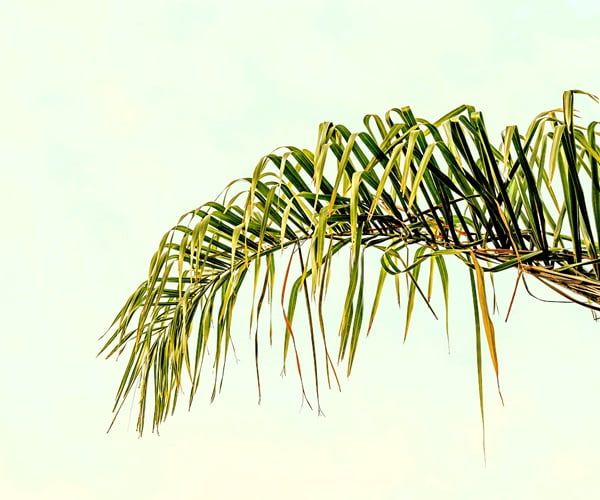 Wilting Leaflets on Palm Frond
Wilting Leaflets on Palm Frond Tips of Palm Frond Leaflets Getting Necrotic
Tips of Palm Frond Leaflets Getting NecroticMaking a Watering Schedule for Your Palms
FTC Disclosure: If you purchase via a link/ ad on this site, we may earn a small royalty. There's no added cost to you. Thanks much for any looks/ orders! Details>
A popular question is: How often should I water my palm tree? Another palm question that doesn't have a plain yes or no answer.
Think about the particular palm you'll be watering. Then consider these details to help make a watering schedule.
- What is The Species of Palm? Know your palm's needs. Think of your palm's Native Environment. Give it similar conditions.
 Is Your Palm's Native Land a Rainforest?
Is Your Palm's Native Land a Rainforest?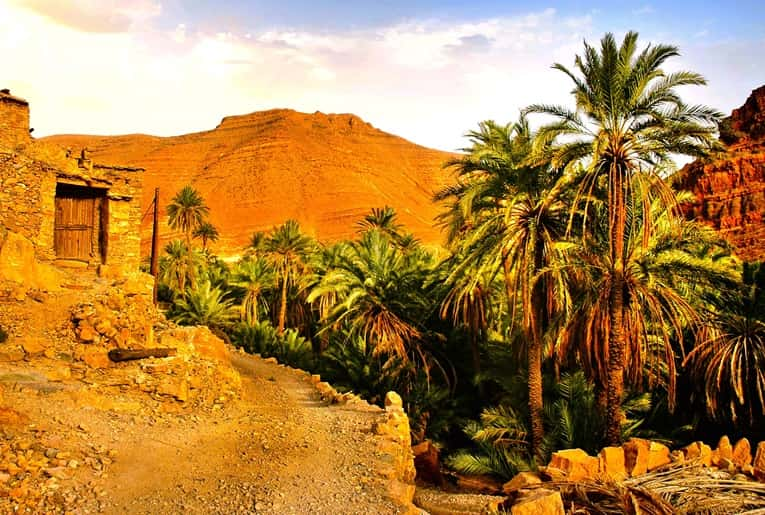 Or Is Your Palm From a Desert Climate?
Or Is Your Palm From a Desert Climate?- What is your own climate? Palms are sensitive to temperature. If your local temps rise above the palm's native weather, more water may be needed.
- What season is it? During summer, observe your palm carefully. It may need additional watering sometimes. In winter cutting back usually works.
When winter arrives, you can probably scale back. Water every other week. Even once a month, depending on your climate & the species.
- Is your palm established? A newly planted palm needs more regular water during the first year.
- What soil type is it planted in? Is the water table high? Sandy soils drain quickly. While clay soils stay soggy for awhile, which most palms won't enjoy.
A general rule for established palm trees: most should be watered at least once a week.
Some species may need watering twice a week, especially during very hot spells.
 This Newly Planted Palm Needs Watering at Least Twice a Week
This Newly Planted Palm Needs Watering at Least Twice a WeekExact Watering Principles for Palm Trees
When watering your palm, give it a deep, thorough soak. The method isn't important. Whether it's Hand Watering by Hose or with a drip system.
Either way, water slowly and steadily.
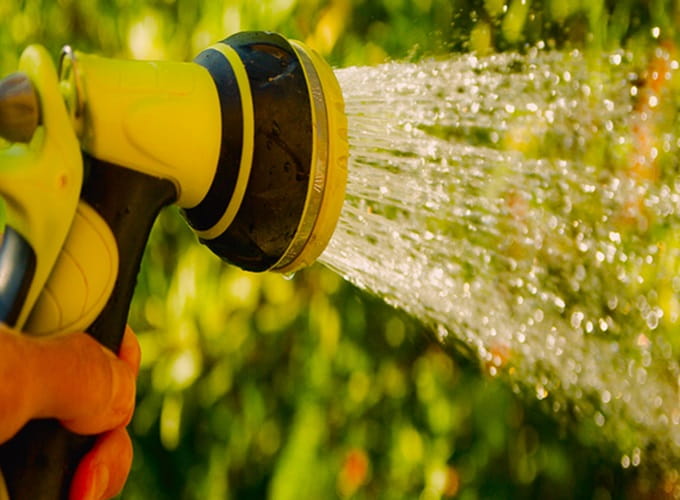 You Can Choose to Water by Hand - Some Find it Relaxing!
You Can Choose to Water by Hand - Some Find it Relaxing!But investing in a Drip Irrigation System can help you be sure your palm gets the water it needs, no matter your schedule. They can be Programmed to Water on a Timed Approach. And settings can be adjusted for seasons & weather.
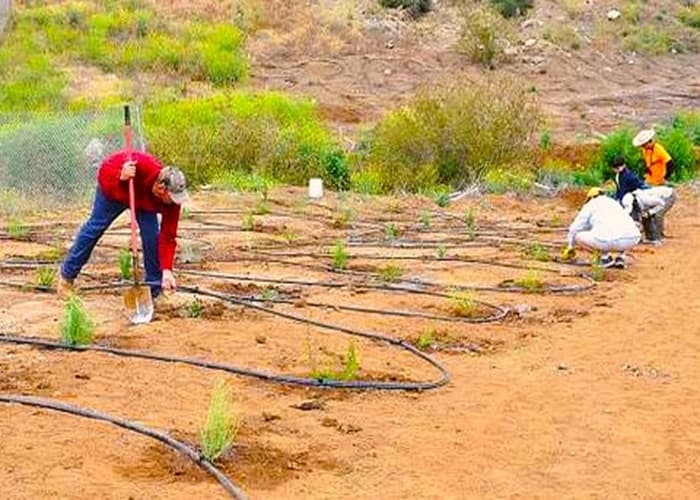 Putting in a Drip Watering System to Cut Workload in a Garden
Putting in a Drip Watering System to Cut Workload in a GardenRoots of palm trees grow & spread out from the Root Initiation Zone at the Base of the Trunk. Meaning many palm roots are shallow. A few initial roots go down, but most grow outward. For as much as 50ft/15m or even more.
So water should reach to 12in/30cm deep, the depth of most roots. Some palms are excessively water hungry. These should be watered more deeply, even down to 2ft/60cm.
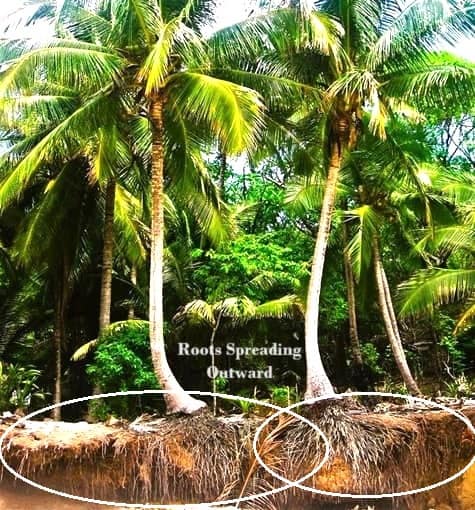 Shallow Roots Still Anchoring the Palms
Shallow Roots Still Anchoring the PalmsBe aware of high water needs by some palms. What really applies is knowing your palm's origins. We have This Fabulous Book that tells the needs of 200 common palms.
You can check if you've watered deeply enough. Some stick their finger into the soil an hour after watering. If the soil is moist it's fine. But fingers aren't usually 12in/30cm long!
Moisture Meters can be used instead. Aim to keep the meter in the "moist" range, avoiding both the "dry" and "wet" extremes. Once you've established this, that helps your future watering timing.
Best Time of Day for Watering Palms
Watering your palm tree at the right time of day helps it stay healthy. Early morning or evening is mostly the ideal time.
Because it's best for the water to soak into the soil before the heat of the day. To keep roots cooler. Highest afternoon temperatures could cause high evaporation.
Conserving the Palm's Water

Most palms love plenty of sunlight. But the hottest afternoon sunlight can contribute to moisture loss. Especially if you live in an area with hot, dry summers.
If you're going to plant a new palm, know its needs. Plant With forethought. You might plant it where there's some afternoon shade.
Young palms Need Some Protection while establishing their roots.
The Latest at MPT
-
San Diego palm trees: History, Species, and Their SoCal Charm
Fascinated by San Diego palm trees? Discover their history, types, and why they're a staple of SoCal’s SD neighborhood scenery to inspire your landscape design.
To Mulch or Not To Mulch to Retain the Palm's Water
Mulch is an added moisture-saving measure. Especially for palms growing in hotter areas.
But its value has been debated. Horticulturist T.K. Borschat cites two studies that show minimal water is lost without mulching. Plus the mulch itself absorbs the water to itself. He doesn't recommend mulching.
Yet other palm specialists Do Recommend Mulch (we use/like this one - recommended). Saying it helps prevent weeds. Plus as it breaks down, it adds to soil composition. And it keeps soil temps from overheating roots.
If you decide to mulch...
- Place 2-6in/5-15cm layer of quality organic mulch.
- It's important to keep mulch away from the palm's stem. Leave about 8-20in/20-30cm clear from the trunk outward to prevent fungal growth.
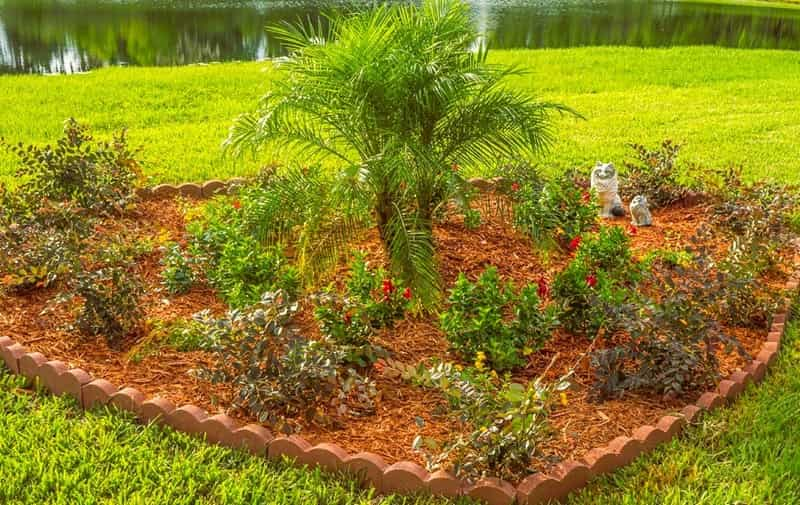 Mulch is Much Too Close to This Palm's Trunk
Mulch is Much Too Close to This Palm's TrunkWhat to Do About Soil Types When Watering
Another important aspect when watering palm trees is the type of soil they're planted in. Palms prefer well-draining soil that doesn't stay soggy for long.
- If your palm is planted in heavy clay soil or an area with poor drainage, less frequent watering may help avoid oversaturating roots.
- Or if your palm is growing in sandy, quick-draining soil, watering more often may be needed. To keep the soil consistently moist. Mulch may also help.
Avoid Problems
When Learning How to Water Palm Trees
A mistake palm tree owners make is watering frequently, but Not Deeply Enough.
Roots seek water. They'll be too shallow if moisture only seeps in a short distance.
- Then your palm could fall over with high winds.
- Any drought periods will cause excess stress.
Knowing how to water palm trees fully & less often, encourages your palm to grow deeply anchored roots. The palm will withstand harsh weather events much better.
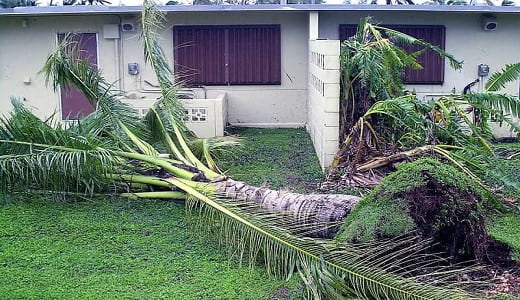 Typhoon Chataan in Guam Uprooted This Palm
Typhoon Chataan in Guam Uprooted This PalmWinds at 104mph Toppled it Because of Poor Care
Water Quality for Your Palm
It's also important to pay some attention to your Water's Contents. Tap water often contains chlorine & fluoride. Some areas have lots of boron, as well. How much salt content is there? Any of These in Water Can be Toxic to most palms.
Some palms are more sensitive than others. Symptoms show on lower fronds. Usually you'll see blackening leaf tips (dead tissue: necrosis) or lined-up black spots on leaf surfaces.
- Is your tap water filtered?
- Can you capture rainwater to irrigate your palm?
But is plain tap water your only choice? You can Run it Through a Purifier. Or if you can, fill a container with water & let it sit for 24 hours. This can allow harmful chemicals to evaporate.
Takeaways from How to Water Palm Trees
By following these tips for watering palm trees, your palm will reward you with lush, tropical beauty for many years.
Remember the key to how to water palm trees. Water thoroughly & deeply so the palm's roots will have that moisture it needs.
